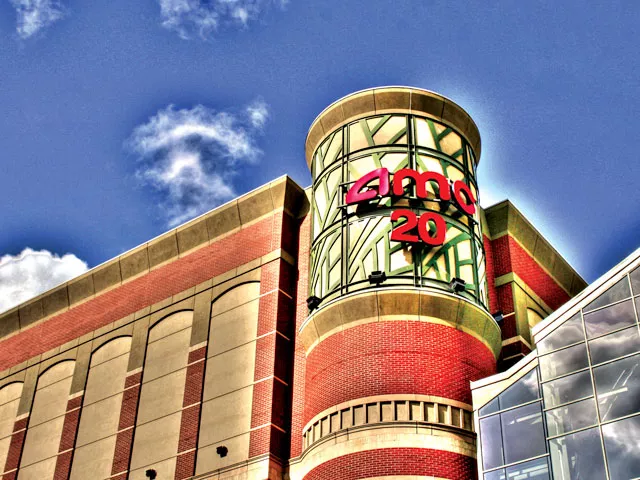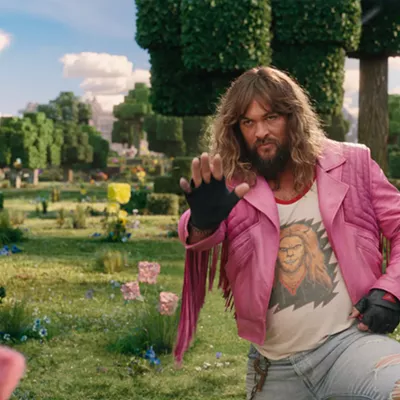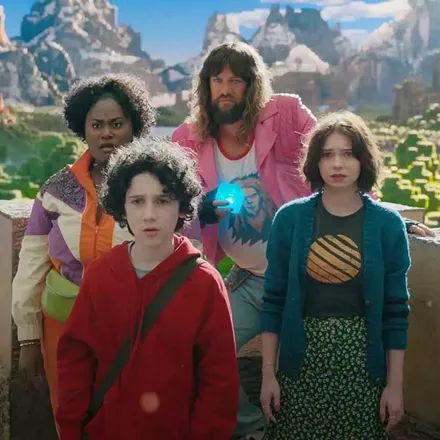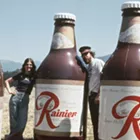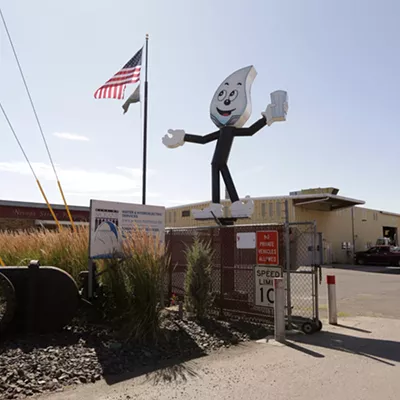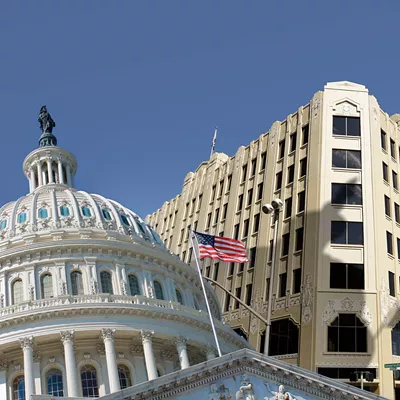When comedian Chris Rock released Good Hair, a documentary about all the political and racial meanings surrounding African-American hair care, Leonard Pitts, in his syndicated column in the Spokesman-Review, recommended it. But if you wanted to see it in Spokane, you certainly couldn’t in any of the 20 screens at AMC’s River Park Square.
Good Hair appeared in the AMC theaters of Arcadia, California and Orlando, Florida. But not Spokane. Neither did blaxsploitation spoof Black Dynamite.
AMC, like most of the big theater chains, hires programmers to analyze specific regions. And moviegoers in New York, Cleveland, and Portland watch different films.
“We do have people that are always paying attention to what’s going on in the Spokane market,” says AMC corporate spokesman Justin Scott. “They [track] demographics — what’s going on in this particular market culturally, politically.”
It’s all financial calculus—which movies, on how many screens, will make the most profit? Are you hoping that AMC books that quirky little independent film? That all depends on your region’s population, politics, and, yes, race.
“There’s a theater in New Jersey where there happens to be a large Korean population,” Scott says. “[So] we’re programming Korean-specific movies.”
But AMC has it easy. It’s big. What movie does a chain with 4,612 screens get? Whichever one it wants. Others aren’t as lucky.
The Garland Theater’s only crime is selling movie tickets for $3.50. For that, they suffer.
“They categorize us,” owner Kathy Fritchie says. Labeled a “third-run” movie theater, most distributors refuse to give the Garland movies until after Regal and AMC have finished.
Studios make their money by taking a percent of movie profits. It makes sense that they’d rather get a chunk of $8 instead of $3.50. To receive films the day of release, all Garland would have to do is raise its prices — but then it wouldn’t be the Garland, would it?
The delay, naturally, determines which movies Garland can play. It kills any holiday movies. “There’s not much of a point in getting A Christmas Carol in February,” says Tara Brunson.
And it kills any flops. “Most of the time we won’t get a movie unless it grosses $50 million in the U.S.,” general manager Tara Brunson says. “That’s kind of a rule of thumb.”
For the Magic Lantern, Spokane’s art house movie theater, it’s more complicated. Art house flicks —the sort of independent movies that the Magic Lantern craves — have fewer reels printed. And the average Spokanite hasn’t heard of half of these films.
Today, as owner Joe Davis and I speak outside a screening of The Imaginarium of Dr. Parnassus, the theater’s almost empty. The Magic Lantern operates in the black — but barely. For example, while the Magic Lantern played both Good Hair and Black Dynamite, both did very poorly. Maybe AMC had it right.
Since Davis is busy (the whole “being a doctor” thing’s a time-sucker) he hired a movie-booking agent named Paul Sturtz to find the right films for him.
“In general, you want to bring movies that aren’t being shown elsewhere,” Sturtz says. “It is sometimes a bit difficult. AMC’s quite a competitor.”
AMC’s goal, explains Scott, is to hit the broadest possible audience with a diverse swath of films, including money-making independent features.
“We tried to get a film through Sony Classics,” Davis says. “My agent had told me that AMC had already booked every [single] Sony [Classics] film.”
“They’re so well established, the distributors only want to give films to them,” Sturtz says. “It used to be that was against the law, to not deal with any other theaters in town.” (The AMC spokesman refused to comment on this issue.)
Instead, every independent movie theater hopes to find its My Big Fat Greek Wedding — a low-budget hit the oracles and demographic gurus at megachains don’t see coming.
This year, it was Boondock Saints II: All Saints’ Day.
The first Boondock movie, a hyper-violent hyper-stylized action flick, was a critical and commercial disaster. The Inlander’s MaryAnn Johanson called it “by turns, hilariously awful and just plain unhilariously awful.” But in the 10 years since, the film went from flop to college dorm room poster staple.
AMC wasn’t playing it. Neither was Regal or Village Centre.
“We’re going to start it Thanksgiving Day,” Davis remembers Sturtz saying. “It’s going to run really well, but the film stinks.” Right on both counts. The first day, the line at the Magic Lantern stretched out the door of the Saranac building. Good thing. Magic Lantern needed the money.
“I book a number of different theaters, the level of support [for the Magic Lantern] is just one-tenth of what I’m used to,” Sturtz says. He says that the independent theater where he lives — in Columbia, Missouri, a city of 85,000 — regularly grosses 10 times more than the Magic Lantern.
Because here’s the cruel thing: Prints are expensive; supplies are limited. If Magic Lantern doesn’t make money, fewer and fewer distributors want to play their best movies there.
You don’t get it, Davis remembers Sturtz telling him. It’s not you that has to make the profit. It’s the distributor.
“If I was making $49, like I was tonight on Imaginarium, why would they waste their money on me?” Pretty soon, Davis jokes, “I’m [only] getting B-line Buffy Goes to Vegas.”
For that very reason, Davis recently raised his prices from $5 to $7.
Some day, demand — not supply — will be the only relevant variable. Soon shipping movies won’t require stamps and tracking numbers. Already filmmakers have begun to deliver films via satellite. RAR files replace reels. All a theater needs is fast download speeds, a big hard drive, and a decent digital projector.
The studio e-mails the theatre a decrypting password and then, boom: feature presentation.
Whether that presentation is a blockbuster, an obscure art film or schlock like Boondock Saints II … well, that depends on the Spokane demographic.

